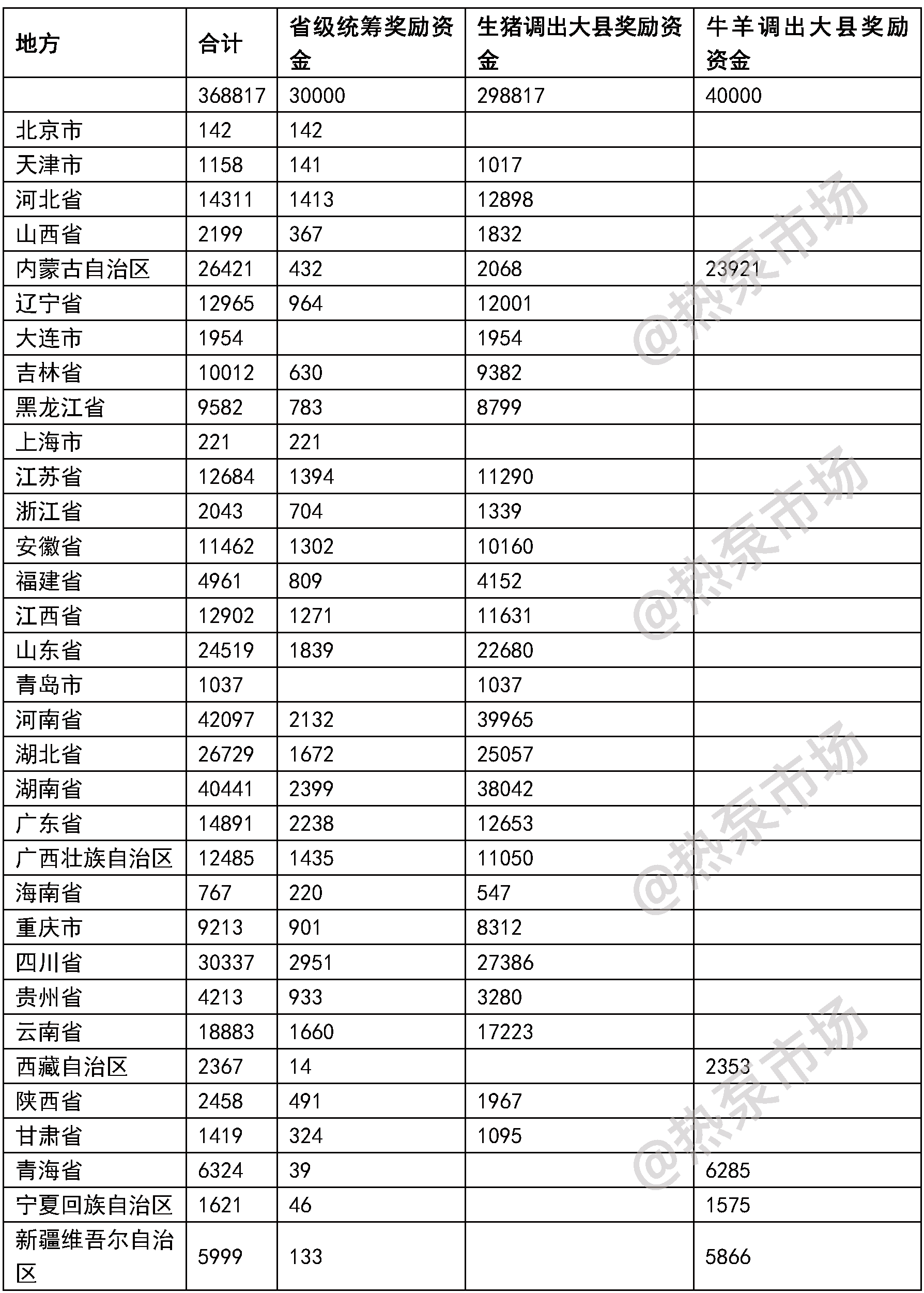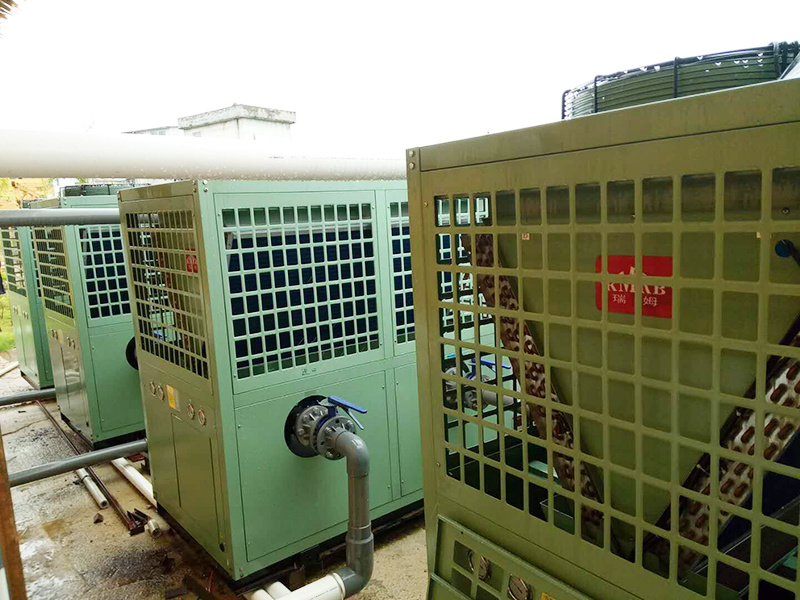Success Stories
Attention pig farms: the Ministry of Finance 3.69 billion yuan pig incentive issued to the provinces! Don't forget to use heat pumps for heating
Published on:
2023-04-20
Recently, the official website of the Ministry of Finance released the "Notice of the Ministry of Finance on Issuing the 2020 Pig (Cattle and Sheep) Transfer Out of Large Counties Reward Fund Budget", which clarifies that all provinces (autonomous regions, municipalities) will be allocated to the 2019 live pig (cattle and sheep) transfer out of major counties Reward funds of 3,688.17 million yuan have been allocated. The following are the details of each province -

Attachment 1: General table of incentive funds for live pigs (cattle and sheep) transferred from large counties in 2020 (unit: ten thousand yuan)

In the past two years, due to the dual promotion of the country's encouragement and market demand, there have been more and more large-scale pig farms. According to data released by the National Bureau of Statistics, the number of live pigs in 2019 was 310.41 million. For every 100,000 pigs, the floor heating area of the nursery and fattening houses is about 10,000 square meters. Regardless of the north and south, this part needs to be heated!
The Beijing Municipal Bureau of Agriculture and Rural Affairs issued the "2020 Recommended Catalog of Major Agricultural Technologies in Beijing", in which the Municipal Bureau of Agriculture and Rural Affairs organized the selection of 31 major agricultural technologies for 2020, and the "air source heat pump integrated heating technology for large-scale pig farms" was affirmed and promotion.
Principle of air source heat pump technology
Air source heat pumps work on the reverse Carnot cycle principle. The heat pump system drives the compressor to work through electric energy, uses the heat in the air as a low-temperature heat source, causes the heat-absorbing working medium to undergo a cyclic phase change, and conducts heat exchange through the condenser or evaporator in the system, extracting or releasing energy to a water cycle process.

As we all know, the air source heat pump is greatly affected by the ambient temperature and climate. As the temperature drops, the heating capacity of the unit will decrease, especially in the extreme winter weather in the north. But the technology of air source heat pump is also constantly improving and improving!
On the basis of ordinary air source heat pumps, the "air injection enthalpy increase" system is added. When the ambient temperature drops sharply, the heating capacity attenuation is extremely small, and the heating effect is fully guaranteed. The unit can operate normally at minus 25°C. This unit is called "ultra-low temperature Air source heat pump unit".
Application advantages on the pig farm
Through research, it is found that: when the air source heat pump supplies 45°C hot water for floor heating in Beijing’s heat preservation and energy saving pig house, the ground temperature of the pig house is about 27°C when there are no pigs, and increases by 2-3°C when there are pigs, which can meet the needs of the nursery. Pig temperature requirements.

The average COP of the air source heat pump in the winter heating season is about 2.86, which can save energy and reduce emissions by 65% compared with direct electric heating.
Because of the "gas shortage" caused by coal-to-electricity or coal-to-gas conversion, the price of LNG has risen sharply, and the price of electricity is more stable than that of liquefied natural gas (LNG). Therefore, air source heat pump heating is the preferred solution for heating piggery after the ban on coal heating.
System Design Points
1) Pig house heating water temperature
The pig house should be heated with hot water at about 45°C, and the end of the pig house should be ground heated.
2) Pipe insulation requirements
Before the pipeline enters the heating part of the pig house, it should be insulated. The insulation layer requires rubber and plastic insulation materials to be no less than 4 cm thick.
3) Thermal insulation and energy-saving renovation of non-insulated pig houses
It is advisable to do thermal insulation and energy-saving renovation before heating renovation. The requirements for energy-saving renovation are as follows:
The original 24-wall or 37-wall thermal insulation and energy-saving renovation methods:
1. Coating finish;
2. Apply 3-5 mm thick DBI dry-mixed mortar and press a layer of glass fiber mesh cloth in the middle;
3. DEA mortar paste 90-100 mm thick B1 grade extruded polystyrene board, and add anchor bolts, >4 per square meter;
4. Brush the interface agent on the base wall (smooth with DP cement mortar when the wall is uneven); among them, the parameters of extruded polystyrene board: density 22-35 kg/m3, thermal conductivity: 0.032W/(m·K);
In addition to the external thermal insulation and energy-saving transformation of the walls of the old pig house, it is also necessary to carry out energy-saving diagnosis on the windows, roof or ceiling of the old pig house, so that the heat transfer coefficient of the external windows and roof (ceiling) of the pig house can pass the energy-saving transformation. Not more than 1.8W/(㎡·K) and 0.30W/(㎡·K).
4) Estimation of the heat load of the nursery pig house heating
The heat load of the nursery pig house after heat preservation and energy saving transformation can be calculated according to 40w/m2, and the heat load without heat preservation transformation is configured according to 70w/m2.
5) Heating equipment
The heat source of heating should be air source heat pump. The choice of air source heat pump can be selected according to the parameters of -7°C working condition. For example, the heating capacity of 5 horsepower equipment at -7°C is about 10kw.
Note: Before designing and installing heating equipment, it is necessary to apply for electricity load to the local electricity authority, and pay attention to electricity safety during use.
Air source heat pump heating is suitable for nursery pig houses that adopt the ground breeding method.
source:
[1] The official website of the Ministry of Finance;
[2] Beijing Municipal Bureau of Agriculture and Rural Affairs, "2020 Recommended Catalog of Major Agricultural Technologies in Beijing".


